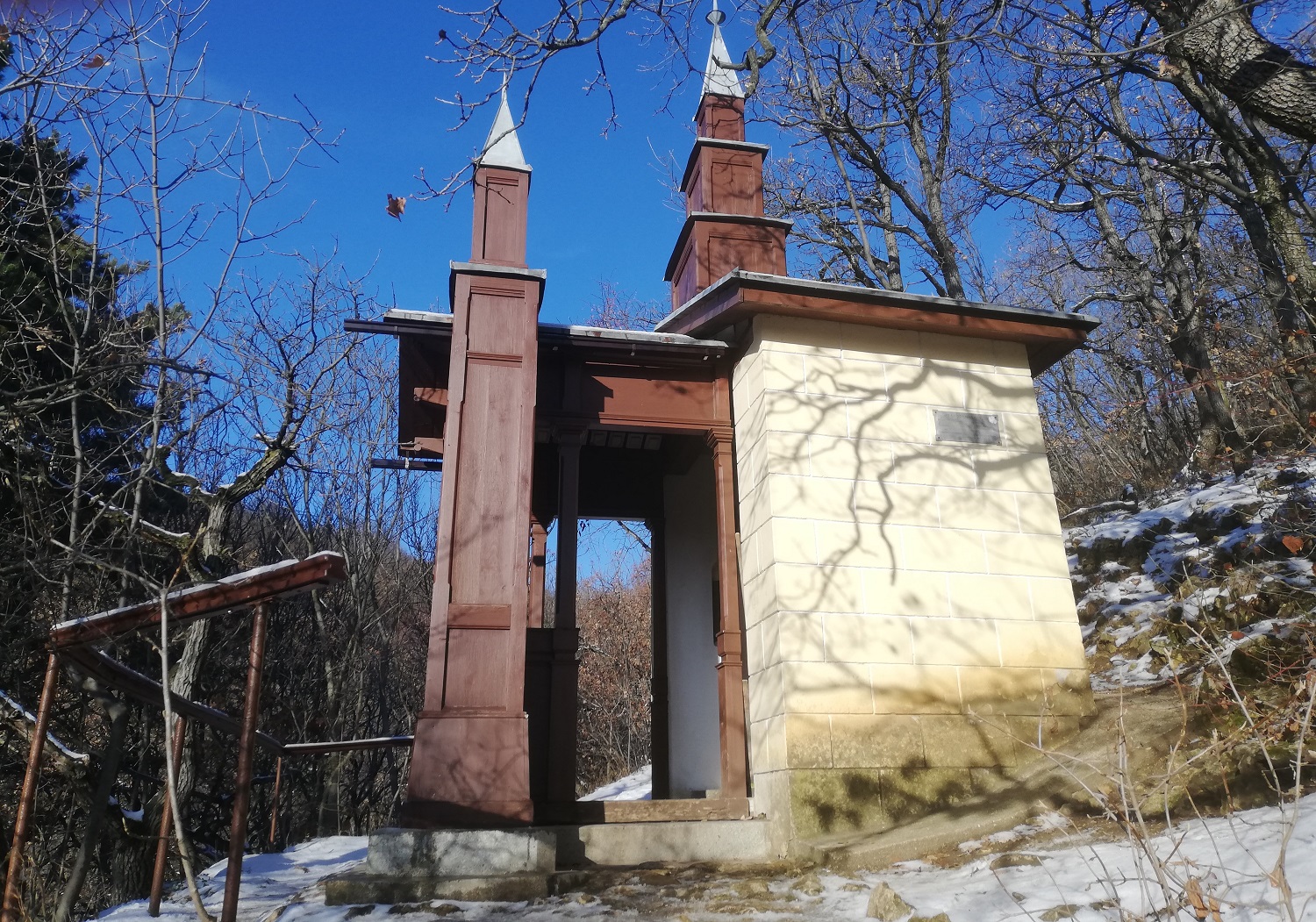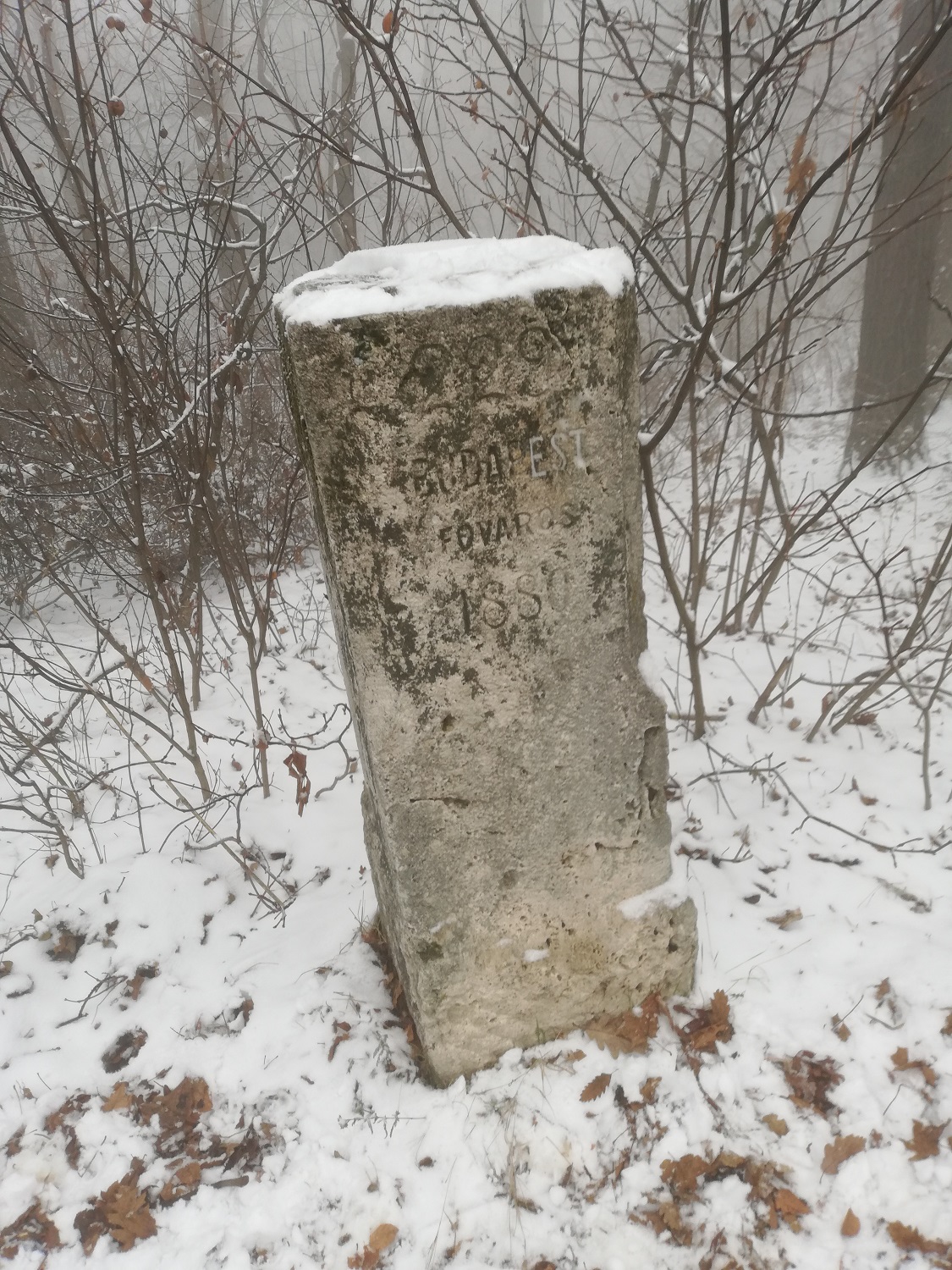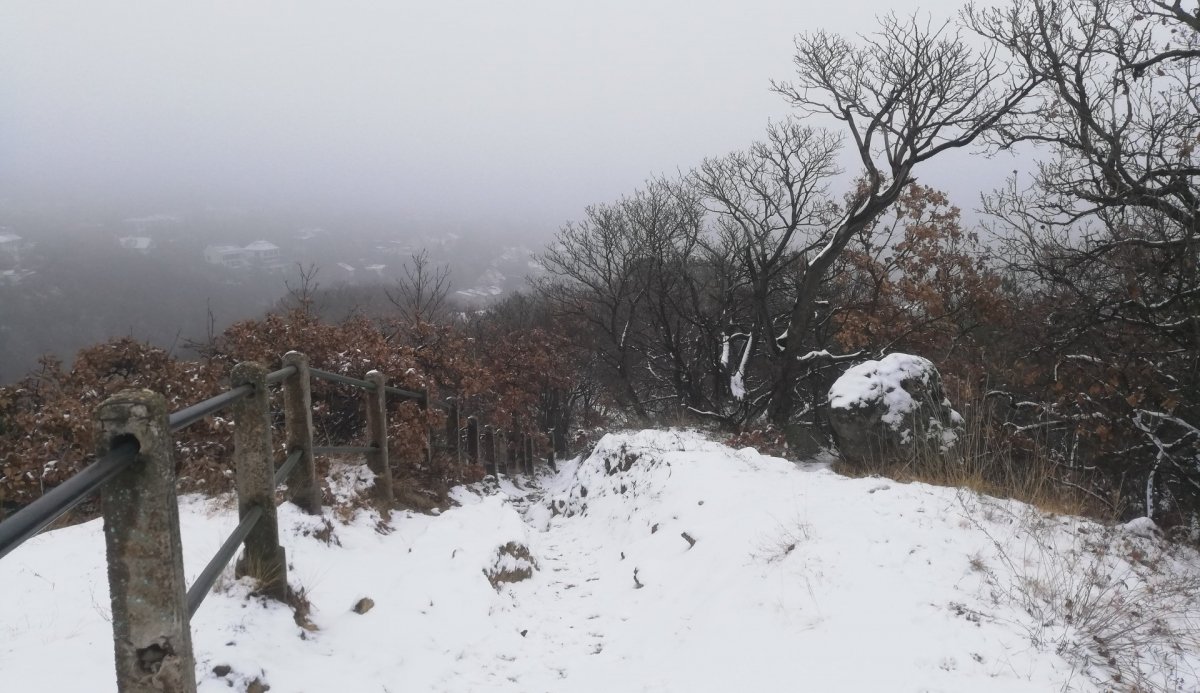The Ördög-orom fits well into the eastern row of the Csíki Mountains, which run through the southern part of the Buda Hills: a small promontory dolomite with a very nice view of the surrounding mountains and parts of the city. Luckily, we can walk along well-marked hiking trails, so neither a map nor a smartphone is required to walk around, we just have to graze our eyes.

Our journey is steep, but it starts with a short ascent, in return the surrounding mountains appear soon (Photo: Dávid Palotás / pestbuda.hu)
The easiest way to get to Ördög-orom from the city centre is by the 8E buses, or by tram 59 from other parts of Buda. It is worth starting the walk from Márton Áron Square so that there is enough time to pick up the rhythm of nature until we reach the forest roads. By the way, there are several well-known catering units in Márton Áron Square, so it is still possible to refuel here, however, the route presented in the article is a round trip, so it is worth timing the eating to the end.
The entrance to the Farkasréti Cemetery is also located in Márton Áron Square, where such famous people as Béla Bartók, Oszkár Asboth, Gizi Bajor and Aladár Gerevich rest, but the line could be continued for a long time. There are many tombstones, statues and memorial plaques adorning the graveyard, so it is worth dedicating a whole day to it.
You have to start from Márton Áron Square following the green triangle sign, it starts here anyway. The sign starts at the intersection with traffic lights down Törökbálinti Road. We better start walking on the right side of the road, because our sign will soon branch right onto Zsigmondy Vilmos Street, and Törökbálinti Road will descend into the valley. We cross an asphalt road after 250 metres on smaller wooded sections, and this is where the Ördög-orom actually begins.

The winter sight of the peak is also beautiful (Photo: Dávid Palotás / pestbuda.hu)
On the paved road, turn left, then after 50 meters turn sharply to the right. It starts with a rather steep ascent, but in return it ends quickly, and next to the railings, the sight of the surrounding hills and mountains appears. A thin wooded forest covers the rocky cliffs of the peak, of which the view is almost continuous, especially in winter, as we continue along the rocky ridge at the green triangle sign.
We pass by the rock block of the Ördög-szószék [Devil's Pulpit], hence the name of the mountain, it is believed that the devil lived here, from here he preached to the people. Even if he doesn't talk to us here today, it's possible that the entire population of the hillside would hear us standing on top.
If we look into the valley towards the neighbouring Széchenyi Hill, we can also see the karst bush forest of Farkas-völgy [Wolf Valley], it is worth visiting there in good weather. Unfortunately, the hillside is very densely built up, which pretty much distracts from the view. Essentially, the entire side of Széchenyi Hill is parcelled out.
Walking on the ridge for only a few minutes, the blue M sign of Mária Road also joins from the left. From here it is only 1-2 minutes to the highest point of the Ördög-orom, which also has a view.

Foggy view from the peak (Photo: Palotás Dávid / pestbuda.hu)
Wooden railings help with orientation. At the highest point is a modern metal signal pole.

Peak signal column at the highest point (Photo: Palotás Dávid / pestbuda.hu)
So far, the dear visitor has certainly noticed that, as we have become accustomed to, there is an educational trail here as well, and information boards inform us about the botanical and historical curiosities that characterize this place. The peak itself is under nature protection. On the other side of the Ördög-orom, the depth below the ridge is the Irha-árok [Pelt Trench]. If the weather is good and if you feel like it, it's worth climbing down to the mine pit, a well-kept area.
Going further, we pass by benches, then we reach Nőszirom Street between the houses.

Resting place on the Ördög-orom (Photo: Dávid Palotás / pestbuda.hu)
Winding a little between the houses, the terrain slowly begins to descend and we reach the Farkas-völgy. This valley and stream separate the two dolomite blocks: the Széchenyi Hill and the Ördög-orom. Walking down a small pedestrian valley bridge, the green C round trip signs are to the left, but keep going on the green triangle tourist sign. The ground level rises, we climb to the side of Széchenyi Hill. It is also worth taking a look at the chapel on Magdolna Road on our way, it is a very nice little chapel, it is worth seeing. It is specifically a fine example of a well-restored building. It is no coincidence that the Mária Road passes by here, it makes sense here.



The chapel is a real masterpiece (Photo: Dávid Palotás / pestbuda.hu)
Our path then serpentines up the hillside until we reach a fork: to the right down the green cross begins. If we continued on the green triangle, we would end up at the Széchenyi Hill terminus of the nearby light railway. If we go up there, we can reward ourselves with a small train ride or a kind of smaller adventure park, but we can now continue the trip back on the side of Széchenyi Hill on the green cross.

A little further away, road signs next to the Svábhegyi Csillagda (Photo: Dávid Palotás / pestbuda.hu)
The green cross cuts through a field and continues down a beautiful wooded area. After a few minutes walk, we reach Rácz Aladár Alley, then a roundabout at Mindszenty József bíboros Square. Here you can also see the Hungarian Conquest Memorial Park, as well as the cardinal's sculpture group, a fine work of art.
Finally, on Hóvirág Street, we return to Márton Áron Square, our starting point, next to the cemetery.
It is also important to note that during World War II, passages were allegedly dug into the rocks at the bottom of Ördög-orom. Today, these are not officially open to the public, but exploratory research could be interesting, but as long as there isn’t enough money for it, it’s better for them to stay hidden.
It is clear that this part of Buda is not rich in old, tarnished buildings, but the natural environment offers plenty of opportunities for recreation. The outstanding dolomite mountains of the area are all under nature protection, at least at the very top, but it would not be too late to stop urbanization. Tourist roads can only travel on streets, old dirt roads and free wooded areas have been built in. It would be desirable not to provide utilities in the mountains, then maybe no one would want to build houses there.
Cover photo: View from the top of the Ördög-orom (Photo: Dávid Palotás / pestbuda.hu)




































Hozzászólások
Log in or register to comment!
Login Registration